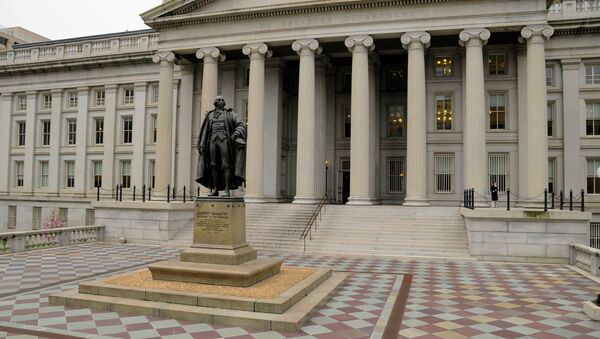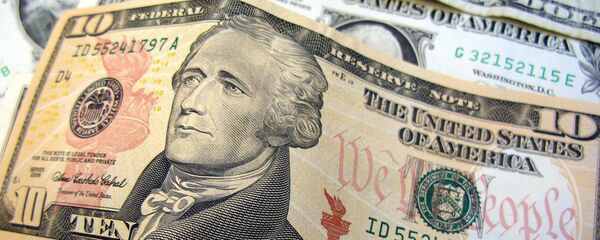Whilst Treasury notes are expected to extend gains above their historic highs, it is a broader economic uncertainty and the closing business cycle in the US which are pushing haven assets higher rather than the effects of Brexit.
Yields on 10-year Treasury notes plunged to 1.385 percent on Monday, just slightly above their all-time low of 1.379 percent. US bonds have given their best performance since 1995, and the gains in Treasury prices are poised to continue throughout the rest of this year given the combination of risks to the economy, including the possible recession, and the US presidential elections, seen as a potential game-changer in the US economic policy.
Read the #FSOC statement on UK referendum: https://t.co/ykX1PYrBK9 pic.twitter.com/EPesYWvHwZ
— Treasury Department (@USTreasury) 24 June 2016
"We don't really know the depth of Brexit," Gary Schilling Springfield, NJ-based A. Gary Shilling & Co. "As low as Treasury yields are, they're still higher than most comparable developed countries."
Meanwhile, the Treasury yield curve dropped to its flattest since November 2007, around the time the massive recession commenced in the US economy, signalling that investors' run for safety might be also an indication of a significant disinvestment from the real economy.
To make the situation more complex, the yield is seen as declining further to just 1 percent by the year's end, that is, given there are currently roughly $9 trln of negative-yielding bonds in the Eurozone and Japan. Subsequently, if a disinvestment-triggered recession indeed unravels in the US, the Federal Reserve might be implementing a negative rates regime as soon as in early 2017 as a recession-aversion measure.
"Forget any idea of any rate increase," Shilling said. "The odds of a rate decrease are increasingly likely. The next move by the Fed would be down, not up."
However, the impact of monetary policy to the broader economy has weakened significantly since the Fed first adopted a Neo-Keynesian approach to growth stimulus in 2007-2008. Roughly eight years into the ultra-loose rates regime, the readily available credit liquidity is failing to support growth, as evidenced by the slowdown in the US economy to an annualized 0.5-0.8 percent in 1Q16.
The return on US Treasuries hit a 20-year high at 6 percent this year so far, its best showing after 1995's 12 percent. US bonds are currently returning more than 15 of 25 similar securities of other advanced economies.
In a similar fashion to the Treasuries, the US dollar surged following Brexit, however, as currency markets stabilize, the dollar's rally might be short-lived given the Fed rate increases are unlikely. Still, at this point, the influx of investment capital in haven assets is seen as hindering inflation and growth prospects in the US.
"At the moment, the US dollar is supported by this risk off sentiment, but we also think there's a limit to that," Adrian Zuercher of UBS said. "The next one to two weeks are definitely supportive for the US dollar, but afterwards, it'll start to peter out."
One of the positive developments in market volatility declining in the US, rendering investor activity lower as profits-seeking and risk appetite are effectively depressed by the overall situation. The broader volatility index, known as VIX, lost 8.4 percent to 23.59 after rising dramatically on Friday, the day after the Brexit referendum. This is a partial indication of investors having priced the risks of Brexit prior to the event, resulting in the ongoing quick stabilization after the initial shock.




